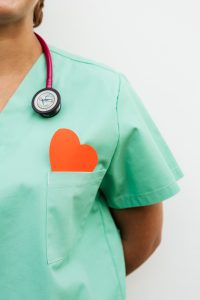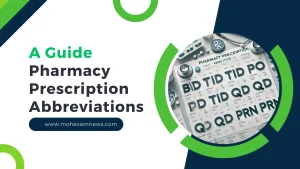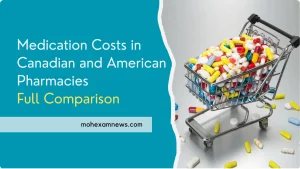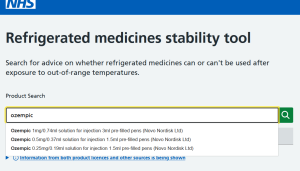Top 100 Pharmacology Flashcards for Quick Revision Before Your Exam
Pharmacology exams are quite overwhelming where you need to memorize drug classes, mechanisms of action, side effects, and therapeutic uses. If you are pharmacy student you’re getting close to your exam date and looking for a fast way to revise pharmacology, you’re in the right place.
That’s exactly why I created these 100 essential pharmacology flashcards to help you review smarter, not harder. These flashcards are designed for quick recall and active revision, whether you’re preparing for GPAT, NCLEX, MOH, DHA, or any other competitive medical or pharmacy exam.
Each question targets a pharmacology concept that shows up often in tests and clinical practice.
100 Pharmacology Flashcards for Quick Revision
Think of this as your rapid-fire pharmacology quiz guide, written by a pharmacology teacher who knows what matters most at crunch time.
1. What is the drug class of Atenolol?
Answer: Beta-blocker (selective β1)
2. What is the mechanism of action of Omeprazole?
Answer: Proton pump inhibitor – inhibits H+/K+ ATPase in stomach parietal cells
3. Name a common side effect of ACE inhibitors.
Answer: Dry cough
4. What is Paracetamol commonly used for?
Answer: Pain relief and fever reduction (analgesic and antipyretic)
5. What is the therapeutic use of Metformin?
Answer: First-line treatment for Type 2 Diabetes Mellitus
6. Which class does Furosemide belong to?
Answer: Loop diuretic
7. Mechanism of action of Warfarin?
Answer: Inhibits vitamin K epoxide reductase – interferes with clotting factor synthesis
8. Side effect commonly associated with Statins?
Answer: Muscle pain (myopathy)
9. Therapeutic use of Salbutamol?
Answer: Relief of bronchospasm in asthma and COPD
10. Which class does Diazepam belong to?
Answer: Benzodiazepine
11. Mechanism of action of Aspirin?
Answer: Irreversible COX inhibitor – prevents platelet aggregation
12. Which class is Amoxicillin?
Answer: Penicillin antibiotic (β-lactam)
13. Use of Loratadine?
Answer: Allergic rhinitis and urticaria
14. Common side effect of Metronidazole?
Answer: Metallic taste
15. Mechanism of action of Heparin?
Answer: Activates antithrombin III – inhibits thrombin and factor Xa
16. Therapeutic use of Lisinopril?
Answer: Hypertension and heart failure
17. What is the drug class of Atorvastatin?
Answer: HMG-CoA reductase inhibitor (Statin)
18. Side effect of NSAIDs like Ibuprofen?
Answer: Gastric ulcer
19. Mechanism of action of Amlodipine?
Answer: Calcium channel blocker (dihydropyridine)
20. Drug class of Ciprofloxacin?
Answer: Fluoroquinolone antibiotic
21. Use of Ranitidine (withdrawn in many countries)?
Answer: Treatment of ulcers and GERD (H2 blocker)
22. Therapeutic use of Insulin?
Answer: Management of diabetes mellitus
23. Class of drug: Clopidogrel?
Answer: Antiplatelet (P2Y12 inhibitor)
24. Mechanism of action of Morphine?
Answer: μ-opioid receptor agonist
25. Side effect of Clozapine?
Answer: Agranulocytosis
26. Therapeutic use of Levothyroxine?
Answer: Hypothyroidism
27. What is the drug class of Losartan?
Answer: Angiotensin receptor blocker (ARB)
28. Use of Doxycycline?
Answer: Broad-spectrum antibiotic – treats infections and malaria prophylaxis
29. Mechanism of action of Digoxin?
Answer: Inhibits Na+/K+ ATPase – increases intracellular calcium
30. Side effect of Phenytoin?
Answer: Gingival hyperplasia
31. Therapeutic use of Alendronate?
Answer: Osteoporosis treatment
32. Drug class of Fluoxetine?
Answer: Selective serotonin reuptake inhibitor (SSRI)
33. Use of Salicylates?
Answer: Anti-inflammatory and antiplatelet effects
34. Side effect of Isotretinoin?
Answer: Teratogenicity
35. Mechanism of action of Sildenafil?
Answer: PDE5 inhibitor – increases cGMP in corpus cavernosum
36. Therapeutic use of Methotrexate?
Answer: Rheumatoid arthritis and some cancers
37. Class of Hydralazine?
Answer: Direct arteriolar vasodilator
38. Use of Isoniazid?
Answer: First-line treatment for tuberculosis
39. Mechanism of action of Loperamide?
Answer: μ-opioid receptor agonist in GI tract – reduces gut motility
40. Side effect of Lithium?
Answer: Tremor, hypothyroidism, nephrotoxicity
41. Class of Haloperidol?
Answer: Typical antipsychotic (butyrophenone)
42. Therapeutic use of Glibenclamide?
Answer: Treatment of Type 2 Diabetes Mellitus
43. Use of Tamsulosin?
Answer: Benign prostatic hyperplasia (BPH)
44. Drug class of Rifampicin?
Answer: Antitubercular (RNA polymerase inhibitor)
45. Side effect of Ethambutol?
Answer: Optic neuritis
46. Mechanism of action of Vancomycin?
Answer: Inhibits bacterial cell wall synthesis – D-Ala-D-Ala binding
47. Therapeutic use of Spironolactone?
Answer: Heart failure, hypertension, and hyperaldosteronism
48. Drug class of Verapamil?
Answer: Calcium channel blocker (non-dihydropyridine)
49. Use of Carbamazepine?
Answer: Seizure disorders and trigeminal neuralgia
50. Mechanism of action of Sucralfate?
Answer: Forms protective barrier at ulcer site
51. Side effect of Chloramphenicol?
Answer: Aplastic anemia
52. What is the drug class of Atenolol? (rev)
Answer: Beta-blocker (selective β1)
53. What is the class of Imatinib?
Answer: Tyrosine kinase inhibitor (used in CML)
54. Therapeutic use of Naloxone?
Answer: Opioid overdose reversal
55. Mechanism of action of DPP-4 inhibitors like Sitagliptin?
Answer: Inhibit DPP-4 enzyme, increasing incretin levels to control blood glucose
56. Common side effect of Amiodarone?
Answer: Thyroid dysfunction and pulmonary fibrosis
57. What is the drug class of Cetirizine?
Answer: Second-generation antihistamine (H1 blocker)
58. Therapeutic use of Methyldopa?
Answer: Management of hypertension during pregnancy
59. Mechanism of action of Bupropion?
Answer: Inhibits reuptake of norepinephrine and dopamine
60. Class of Beclomethasone?
Answer: Inhaled corticosteroid (used in asthma)
61. Side effect of Thiazide diuretics?
Answer: Hypercalcemia and hypokalemia
62. Drug class of Amphotericin B?
Answer: Polyene antifungal
63. Mechanism of action of Donepezil?
Answer: Acetylcholinesterase inhibitor (used in Alzheimer’s disease)
64. Use of Desmopressin?
Answer: Treatment of diabetes insipidus and nocturnal enuresis
65. Drug class of Oseltamivir?
Answer: Neuraminidase inhibitor (antiviral for influenza)
66. Therapeutic use of Sildenafil?
Answer: Erectile dysfunction and pulmonary hypertension
67. Side effect of corticosteroids?
Answer: Hyperglycemia and osteoporosis
68. What is the drug class of Tetracycline?
Answer: Protein synthesis inhibitor (broad-spectrum antibiotic)
69. Mechanism of action of Mannitol?
Answer: Osmotic diuretic – increases osmolarity of filtrate
70. Use of Misoprostol?
Answer: Prevention of NSAID-induced ulcers; also used in medical abortion
71. What is the class of Abciximab?
Answer: Glycoprotein IIb/IIIa inhibitor (antiplatelet)
72. Side effect of Chlorpromazine?
Answer: Sedation and extrapyramidal symptoms
73. Use of Erythropoietin?
Answer: Anemia associated with chronic kidney disease
74. Mechanism of action of Allopurinol?
Answer: Xanthine oxidase inhibitor – reduces uric acid production
75. Drug class of Zidovudine?
Answer: NRTI (antiretroviral for HIV)
76. Therapeutic use of Hydroxychloroquine?
Answer: Rheumatoid arthritis and malaria
77. Mechanism of action of Bisoprolol?
Answer: Selective β1-blocker
78. Class of drugs causing ototoxicity?
Answer: Aminoglycosides
79. Use of Nalidixic acid?
Answer: Treatment of urinary tract infections
80. Side effect of Propylthiouracil (PTU)?
Answer: Agranulocytosis and liver toxicity
81. Drug class of Valsartan?
Answer: Angiotensin II receptor blocker (ARB)
82. Mechanism of action of Tetrabenazine?
Answer: Inhibits VMAT2 – used in Huntington’s disease
83. Use of Baclofen?
Answer: Spasticity in multiple sclerosis and spinal cord injury
84. Drug class of Methylergometrine?
Answer: Ergot alkaloid – used to prevent postpartum hemorrhage
85. Side effect of Dapsone?
Answer: Hemolysis (especially in G6PD deficiency)
86. Use of Pralidoxime?
Answer: Organophosphate poisoning antidote
87. Mechanism of action of Etanercept?
Answer: TNF-α inhibitor (biologic for RA)
88. Drug class of Acarbose?
Answer: Alpha-glucosidase inhibitor – delays carbohydrate absorption
89. Therapeutic use of Trazodone?
Answer: Depression and insomnia
90. Use of Flumazenil?
Answer: Reversal of benzodiazepine overdose
91. Drug class of Clindamycin?
Answer: Lincosamide antibiotic
92. Mechanism of action of Tamoxifen?
Answer: Selective estrogen receptor modulator (SERM)
93. Therapeutic use of Raloxifene?
Answer: Prevention of osteoporosis in postmenopausal women
94. Drug class of Ipratropium?
Answer: Anticholinergic bronchodilator (used in COPD)
95. Side effect of Methotrexate?
Answer: Hepatotoxicity and bone marrow suppression
96. Mechanism of action of Nifedipine?
Answer: Calcium channel blocker – vasodilation
97. Use of Linezolid?
Answer: Treatment of resistant Gram-positive infections like MRSA
98. Drug class of Orlistat?
Answer: Lipase inhibitor – used in obesity
99. Therapeutic use of Finasteride?
Answer: Benign prostatic hyperplasia and male pattern baldness
100. Use of Folic acid?
Answer: Prevention of neural tube defects in pregnancy
Benefits of Flashcards for Pharmacology Revision
- Active recall > passive reading
- Perfect for daily revision sprints
- Builds exam confidence
- Easy to memorize tricky drug facts
- Portable study method (online/offline)
How to Study These Pharmacology Flashcards Effectively
- Use spaced repetition (e.g., Anki or printed shuffle)
- Read questions aloud for active recall
- Cover the answer first, quiz yourself
- Pair with mnemonics where possible
Bonus Tip for exams
Don’t try to memorize everything at once. Go through 10 to 20 pharmacology flashcards daily. Mark the ones you find tricky and review them more often. With repetition and the right mindset, you’ll see results quickly.
Found this helpful? Bookmark this page, to share it with a classmate, or print it for your next study session.






